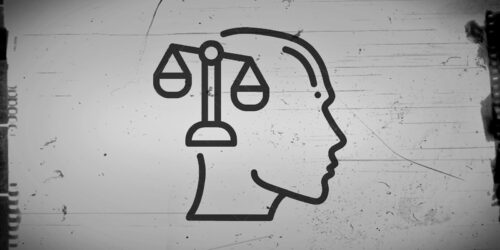Substance Abuse in the Legal Profession
The law presumes that every person reaching legal age—except for those who have been declared mentally incapacitated—may be of a sound mind, therefore competent enough to reason, reach judgments, form contracts and perform all civic duties. This legal requirement can also be viewed as a safeguard against subjective shortcomings in the due course of dealings. However, it has been observed that a vast majority of the legal profession pays little to no regard towards the issue of mental health.
The use of intoxicants and narcotics, as well as access to them, has not been adequately restricted despite extensive efforts. It is also quite apparent that a very large segment of our legal community has fallen victim to substance abuse. As a consequence of this repeated abuse and lack of checks and balances, such abuse has turned into a norm even when lawyers are at work or in court. The most common practices include smoking or chewing tobacco, smoking hashish and consuming alcohol. While personal preferences may lie, for the most part, outside the jurisdiction of any body of law, it must be acknowledged that the effects of such habits go well beyond the person and lead to much wider impact than we presently consider.
Despite the contrary being medically proven, a widely accepted misconception is that smoking or chewing tobacco has negligible mental side effects and only has physical, noticeable side effects, that too in the long term and not instant. However, tobacco and nicotine in any form or quantity do impact the brain and are capable of influencing the overall emotional state of a person and decrease the brain’s ability to function in the long term as they hamper the growth of brain cells. Other addictive intoxicants have also been proven to greatly hinder the functioning of the brain. Several studies have shown that substance abuse greatly impacts employee morale at the workplace as well as the will to be professional and presentable, whereby many individuals lose the tendency to work efficiently when relying on intoxicants.
An article[1] in the New York Times in 2017 focuses on the erratic behaviour of an individual and clarifies how work and mental well-being have spillover effects over each other. It firmly acknowledges the existence of stress in professional life and advises discretion in relying on the unregulated usage of intoxicants to achieve a state of mind which may not be possible otherwise.
Similar details can also be found in psychology,[2] although in a less interesting manner, regarding the reason(s) behind resorting to such activities. Based on various background studies, the scope of the issue has been narrowed down to a simple personality trait: ambition. Professional work can often lead to cutthroat competition, forcing people to participate in the struggle to climb to the top or be left behind. When faced with such competition, anyone would want to grasp every advantage that they have been presented with.
Such behaviour may also be attributed to tradition. Smoking, stemming from social trends, has morphed well into daily practice, inevitably resulting in addiction. Owing to its customary value, no effort has been put into countering the toxic practice, let alone eradicating it completely.
The practice of testing employees for drug use has been around for a long time and generally ensures efficiency of work and the sanctity of the workplace. For instance, the Due Process in Competency Determinations Act (DPCDA) of California’s Civil Code focuses on a clear and concise set of determinants that play an important role in the process of understanding and making decisions. Individuals who are victim to toxic practices, more often than is acknowledged, adopt an inefficient conduct that leads to habitual incompetence during court proceedings and responsibilities out of court. To no one’s surprise, such behaviour can also transcend into gross misconduct, often bordering on contempt of the honourable courts and the ‘just’ process they stand for.
It is recommended that thorough vetting of legal personnel be carried out and similar processes be adopted to test lawyers for drug usage before they enter courts. Testing methods may include urine or saliva tests for substance abuse and breath test for alcohol. Guidelines similar to the US Department of Health’s Mandatory Guidelines for Federal Workplace Drug Testing Program (SAMHSA’s Guidelines)[3] may be developed to put the testing mechanism in place. The testing may take place randomly, announced or unannounced. Since the process of urine testing is rather invasive, unannounced testing may give rise to an arguable infringement of individual liberty. Nonetheless, this method may prove to be a more efficient deterrent than announced testing which may encourage preparation for the test among people as a way to counter the system such as by limiting the use of intoxicants right before a test to avoid a positive result. Finally, to effectively enforce the system, punitive measures may be introduced, such as reprimand for deliberate disobedience or even suspension from court. Once in place and upon further consideration, the process could also be extended to judicial personnel in order to enhance the delivery of justice.
References
[1] https://www.nytimes.com/2017/07/15/business/lawyers-addiction-mental-health.html
[2] https://sunrisehouse.com/addiction-demographics/legal-profession/
[3] https://www.samhsa.gov/workplace/drug-testing#HHS%20Mandatory%20Guidelines
The views expressed in this article are those of the author and do not necessarily represent the views of CourtingTheLaw.com or any organization with which she might be associated.



More than 80% of lawyers in Pakistan will oppose as mostly they think theirselvies above the law and after joining different political and other groups they became part of Mafia.